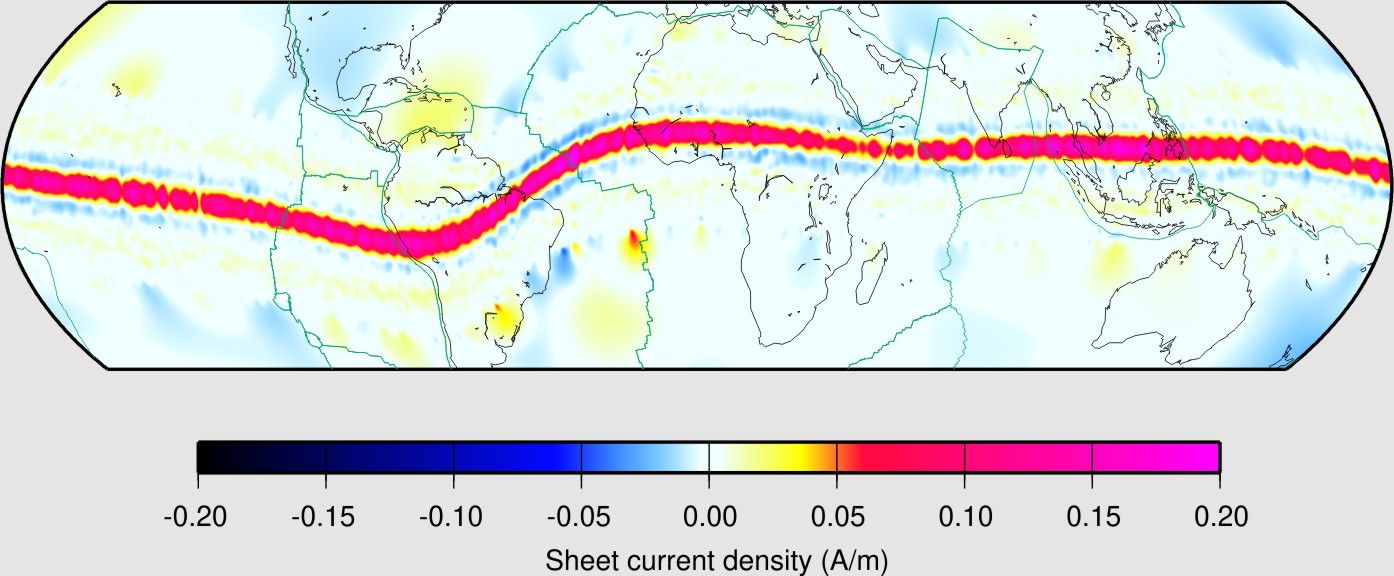| |
Geomagnetism |
|
| Home | Magnetic Field Overview | Model and software downloads | Online Calculators | Magnetic Data Sources | Geomagnetic Tutorials |
|---|
In the dayside ionosphere, the neutral winds set up a polarization electric field which usually points into the eastward direction. At the magnetic dip equator, where the magnetic field is exactly horizontal, this electric field has an interesting effect: The resulting upward E x B drift of the electrons generates a negative charge at the top and a positive charge at the bottom of the ionospheric E-region (about 90 to 130 km altitude). The resulting electric field prevents the further upward drift of electrons. Instead, they are now propelled westward by the eastward electric field. This westward movement of the electrons constitutes an eastward electric current which is called the Equatorial Electrojet. The motion of the ions is largely inhibited at this altitude, due to their collisions with the neutral gas.

Fig 1: Electrojet current densities inferred from 2600 passes of the CHAMP satellite over the magnetic equator between
11:00 and 13:00 local time.
CHAMP satellite magnetic field measurements are ideal for investigating the Equatorial Electrojet. An initial study investgated its spatial characteristics during noon-time (H.Luhr, S. Maus, and M. Rother ). Comparing satellite with magnetic observatory data, Manoj et al. (2006) found a surprisingly short spatial correlation length of 15 degrees in longitude. This result was confirmed in a multi-satellite study by Alken (2007) , who also produced a climatological model of the EEJ and the dayside eastward electric field.